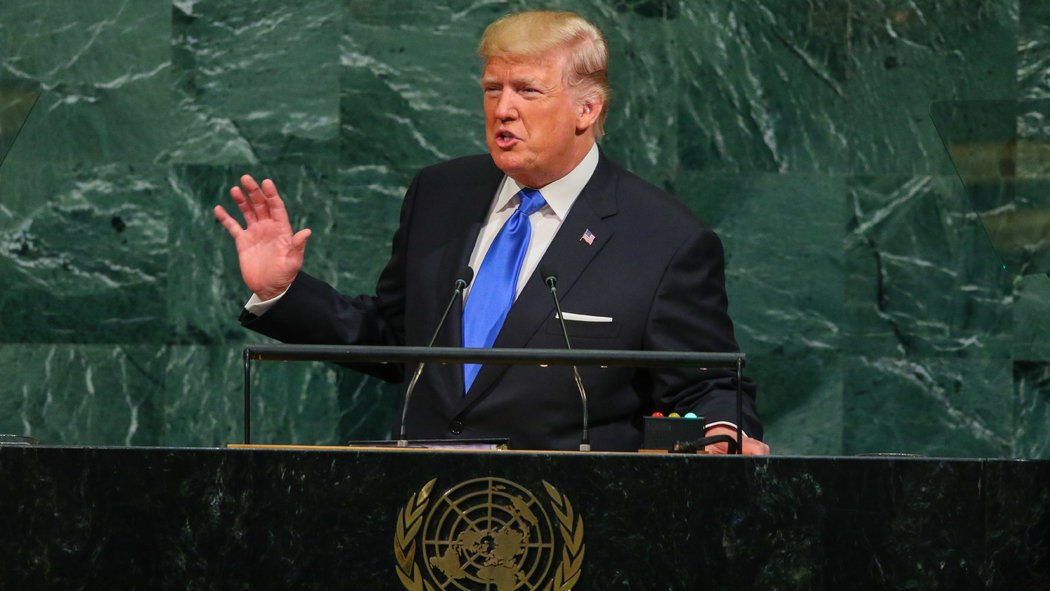Originally published in Foreign Policy on 5 October 2017
Link to the original online publication here.
By Mark P. Lagon
Last month, the United States watched President Donald Trump and other world leaders address the U.N. General Assembly. Yet the General Assembly should not be the only time that Americans pay attention to international agencies such as the U.N. Whether it’s the U.N. or other global institutions, the United States should regularly assess international organizations to see if they serve our priorities and collective goals effectively. This would discipline U.S. policymakers to think more clearly about such goals, about whether multilateral means can achieve them, and about comparative value for money.
Two sober public servants are proposing just that — Sen. Bob Corker (R-Tenn.), the retiring Senate Foreign Relations Committee chairman, and Sen. Chris Coons (D-Del.). Their new Multilateral Aid Review Act would create an executive branch task force to assess 38 organizations, as well as a parallel peer review body, made up of experts appointed by the Republican and Democratic leaders of both the House and Senate. Not only doing regular reviews, but also codifying the process, is an idea that is sound and remarkably simple.
If one were to pick a few touchstones on which to grade both state-based agencies (like the U.N. or World Bank) and hybrids that integrate private and civil society partners (as some devoted to internet or health policy do), what would they be? I’d suggest five.
First, organizations must serve our nation’s and citizens’ interests. For instance, the U.N. Security Council, in spite of its faults (such as the deadlock on Syria), meets the test by being able to create international law, help keep the peace, and give the United States a large voice and a veto against mischief.
Second, it is worth testing whether bodies meet their own mandate. Do they do what they are supposed to do? Do they serve those they are supposed to serve? If they add goals, are they creeping away from their original intent?
Third, does an agency serve the basic values of the United States and of humankind? (More often than not, those two actually align.) Does it advance peace, prosperity, and pluralism? Does it give people a chance to thrive based on their capabilities and gifts, as Indian Nobel laureate Amartya Sen put it? We need to back organizations that promote all people’s agency — agencies for agency, as it were.
Fourth, institutions need to be accountable and transparent. It is crucial that agencies are as accountable to beneficiaries of their work as they are to their donors. And organizational processes should be open to scrutiny to avoid waste and graft. Moreover, they should adopt other organizations’ best practices.
Last but not least, it is worth trying to judge organizations’ comparative nimbleness. Some organizations have a capacity to evolve effectively, like NATO after the Cold War welcoming former foes. Others, not so much.
Several credible voices grade organizations on some or all of these criteria. The reports of the Multilateral Organization Performance Assessment Network are as thorough as its name is difficult to say. Publish What You Fund offers exacting assessments of organizations’ relative transparency. As grounds for their funding priorities, other major Western governments assess multilateral agencies’ efficacy and alignment with their members’ global aims, just as the U.K. and Australia do.
It would be fitting and responsible for the United States to do so too, and on a formal basis. Corker and Coons’ initiative spells out 18 benchmarks for assessing organizations, requiring the administration to develop and then run a methodology by Congress before digging in.
The benefits of such assessments shouldn’t be underestimated. They help the executive and legislative branches decide which agencies deserve taxpayers’ money most. They build international and domestic legitimacy for institutions that fair well. They shine a light on agencies that offer comparatively more return on investment, and those needing reform.
Indeed, a benefit of graded reports — whether they assess governments or organizations — is that they demonstrably give those graded an incentive to improve. A U.S. assessment regimen would propel organizations to better serve their own missions, incorporate U.S. interests, strengthen accountability, and grow innovation. And it would increase their ability to help people overcome disease, discrimination, dictatorship, poverty, and war — and be free to flourish.
